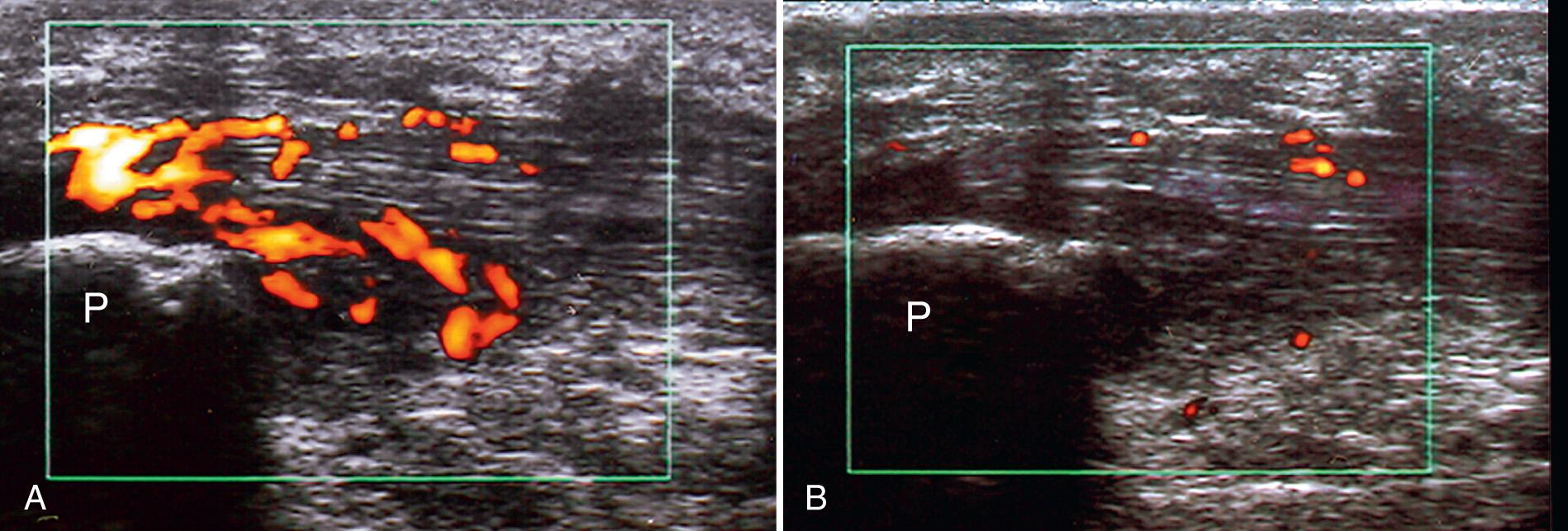Physical Address
304 North Cardinal St.
Dorchester Center, MA 02124
A wide variety of inflammatory, degenerative, traumatic, and neoplastic conditions can be imaged accurately and cost-effectively with ultrasound.
Understanding optimal imaging techniques and recognizing and avoiding common artifacts is essential to musculoskeletal ultrasound.
Ultrasound can provide higher-resolution imaging of nerves and tendons compared with standard clinical magnetic resonance imaging examinations.
Dynamic imaging may be performed with ultrasound, which can assist in the diagnosis of tendon and ligamentous injury.
Ultrasound is becoming a central part of the diagnostic pathway for patients with musculoskeletal complaints. In many cases, ultrasound is performed as an alternative or complement to magnetic resonance imaging (MRI). Ultrasound has several advantages over MRI that have been described in the literature, succinctly by Nazarian in a 2008 perspective article. Ultrasound is well tolerated by patients and can be performed in those with contraindications to MRI, such as implanted cardiac devices or other MRI-incompatible implants, large size, or claustrophobia. Ultrasound examinations often take less time to perform than the corresponding MRI examinations. Ultrasound provides higher-resolution imaging of tendons and ligaments than routine musculoskeletal MRI. Ultrasound also provides the ability to image dynamically, which can be important in the diagnosis of disorders of impingement and subluxation of nerves or tendons. It is excellent at determining the fundamental tissue characterization of solid versus cystic in the setting of a mass lesion—this type of characterization may otherwise require the administration of intravenous contrast when MRI is used to distinguish a T2-hyperintense solid mass from a simple cyst. In many cases, patients can be given results at the time of their examination.
As a general rule, a systematic approach to musculoskeletal ultrasound examination of the joints using defined protocols is preferred to a focal examination when time permits. Focused imaging of symptomatic areas of concern adds additional diagnostic information to the routine protocol. When evaluating a foreign body or palpable soft tissue mass, focal assessment can be performed, with attention to the relationship to nearby anatomic structures, critical to treatment planning. As with MRI interpretation, it is imperative that the radiologist have a clear understanding of musculoskeletal anatomy before performing or interpreting a sonographic examination, especially when previous studies are not available for comparison.
High-frequency linear ultrasound probes (12-15 MHz) are recommended for musculoskeletal imaging. Higher-frequency probes (15-17 MHz) can be helpful for evaluating superficial anatomy, for example, ligaments and tendons in the fingers. Hockey stick–style high-frequency probes can be very useful for evaluation of fine structures, providing focused small field of view images and permitting good skin contact in the peripheral extremities. Lower-frequency (3-9 MHz) linear probes may be needed for greater tissue penetration in deeper structure evaluation or when attempting to determine the relationships of a deep pathologic process to the underlying bone and muscle. Although lower-frequency probes provide deeper penetration of soft tissues, there is a corresponding trade-off of lower resolution. In some cases, a low-frequency curvilinear probe may be necessary (2-5 MHz), for example, in the evaluation of the thigh and hip region or the examination of deep thigh or gluteal masses. By using more than one probe, the user may obtain complementary information about a single disease process. As is the case for all ultrasound imaging, careful attention to image optimization, such as positioning the focal zone at the appropriate depth, is important. Adequate ultrasound wave transduction is facilitated by good skin contact with the transducer and the use of ultrasound gel. A standoff pad can help for imaging very superficial structures.
The role of Doppler imaging in musculoskeletal ultrasound includes characterization of neoplastic, inflammatory, and degenerative conditions. Doppler ultrasound is helpful in confirming vascularization of solid masses in distinction from avascular cystic lesions. It is also helpful in characterization of inflammatory conditions, including synovitis, tenosynovitis, myositis, and soft tissue infection. Finally, tendon neovascularization is a sign occasionally seen with the development of degenerative tendinosis. As in other areas of the body, setting the appropriate Doppler gain is important, and imaging with a small sample volume will minimize motion artifacts. Because many structures of interest in musculoskeletal imaging are superficial, care should be taken to avoid excessive probe pressure during imaging, because this can limit flow detection in areas of vascularization ( Fig. 23.1 ).

An exciting recent development is imaging and quantification of tissue elasticity. This is defined by the tissue deformability and can be measured as a Young modulus for a given tissue expressed in kilopascals (kPa). The range of Young modulus for musculoskeletal tissue ranges from 1 to 10 kPa. Depending on available hardware, ultrasound elastography may be performed using strain elastography or shear-wave elastography. In the musculoskeletal system, early application of elastography has shown substantial promise in the evaluation of tendinosis. In tendinosis, collagen disorganization and mucoid and lipoid degeneration result in tendon softening, which can be visualized and quantified with sonoelastography. Other emerging applications include diagnosis of muscle disorders such as myositis and characterization of soft tissue masses.
Become a Clinical Tree membership for Full access and enjoy Unlimited articles
If you are a member. Log in here